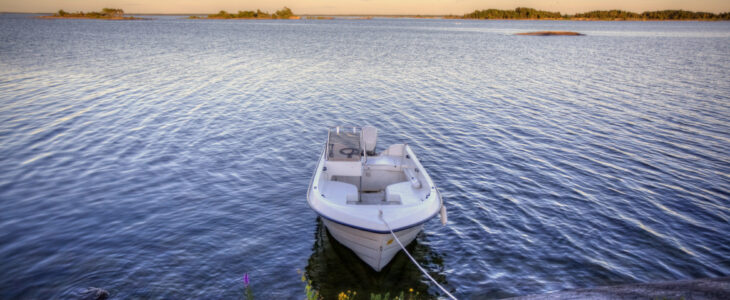Many North Dakotans enjoy our beautiful waterways and lakes by boat. Recreational boating is popular. However, boating also has risks. Thousands of boating accidents occur each year in the United States. You can prevent boating accidents by prioritizing safety and following boating laws. Our Grand Forks personal injury attorneys discuss boating safety and rules for North Dakota boaters.
Safety Tips for Preventing Boating Accidents in North Dakota
Proactive things you can do to reduce the risk of a boating accident this summer include:
Following Boating Regulations
Many boating regulations in the North Dakota Century Code help reduce accidents. Every boat owner and operator should know and follow state boating laws. Reviewing the North Dakota Boat and Water Safety Guide, published by the state Game and Fishing Department is also essential.
Wear a Life Jacket
Drowning is one of the most common causes of death on the water. Even strong swimmers can drown in a boating accident. North Dakota law requires children under 10 years old to wear a life jacket on boats. However, the safest option is for everyone to wear a life jacket while boating.
Complete a Boating Safety Course
One of the best ways to learn about boating safety is to complete a Boating and Water Safety Education Course. The course is required for boaters aged 12 to 15 years who want to operate a personal watercraft or boat with at least a 10-horsepower motor.
Designate a Sober Driver
DUI boating accidents can be avoided by designating a sober driver. Operating a boat while impaired by alcohol or drugs is illegal. It can result in criminal charges and civil lawsuits.
Prepare a Float Plan
Tell family members and friends your boating plans before heading out onto the water, including when you expect to return. Should you experience problems, your family and friends can provide rescue services with your float plan to narrow their search.
Inform Passengers of Safety Rules
Ensure your passengers understand boating safety rules. Instruct your passengers on what to do in an emergency, including where to find safety equipment and life jackets.
Check the Weather Forecast
Always check the weather forecast before leaving the dock and monitor the weather throughout your trip. Weather can change quickly on the water, so be prepared if caught on the water during a storm. Learn the best safety procedures and have equipment on board in case of bad weather.
Equip Your Boat With Safety Equipment
Every boat should have basic safety equipment, including navigation lights, throwable flotation devices, flares, life jackets, a first aid kit, a tool kit, and a whistle or horn. You may also want to consider having an emergency locator beacon, an emergency radio (i.e., marine VHF radio), and a bilge pump or manual bailer. Boats with cabins should also have a carbon monoxide detector.
Regular Boat Maintenance
Boat owners should perform regular boat maintenance at the beginning and end of each season. However, it is also important to perform a safety check each time you take your boat onto the water to address any issues that could result in breakdowns or problems on the water.
Responsible boating reduces the risk of boat accidents, injuries, and deaths. Even experienced boaters benefit from reviewing boating regulations and safety procedures before boating season begins.
Schedule a Consultation With a Personal Injury Attorney in Grand Forks & Minot, ND
Boating accidents can cause serious injuries and deaths. The party responsible for causing the accident could be liable for damages. Contact Pringle & Herigstad, P.C. to discuss your case with a Minot personal injury attorney. We help accident victims and their families seek the compensation they deserve after boating accidents in North Dakota.
